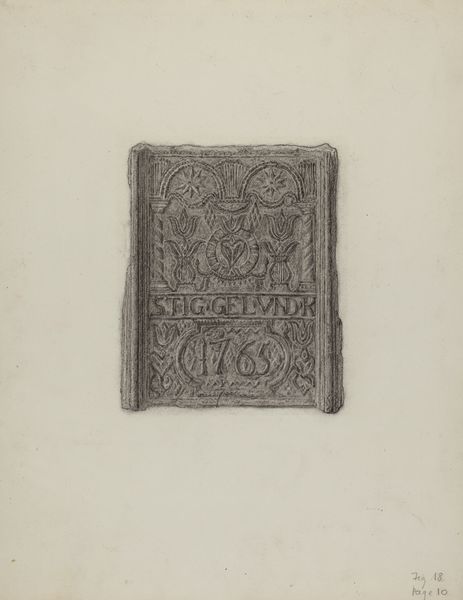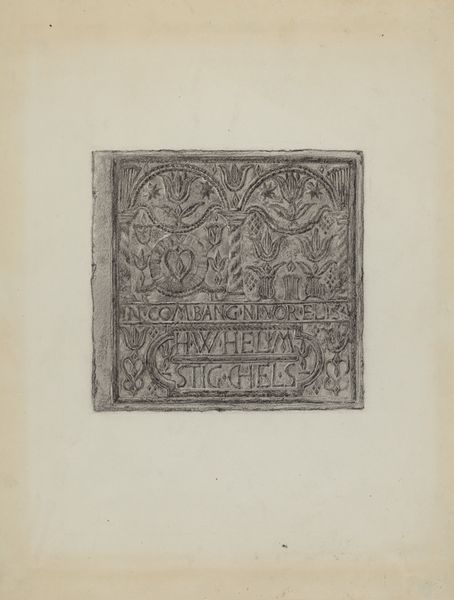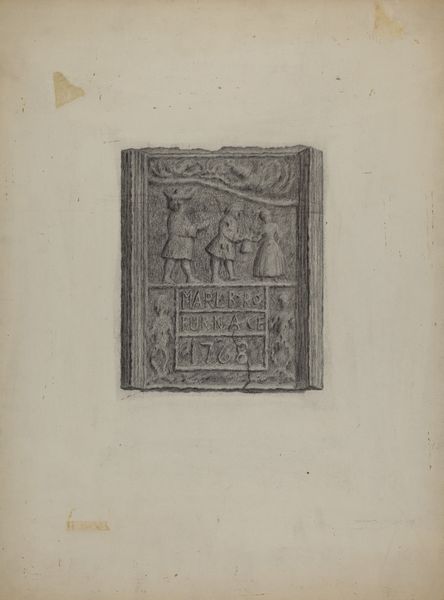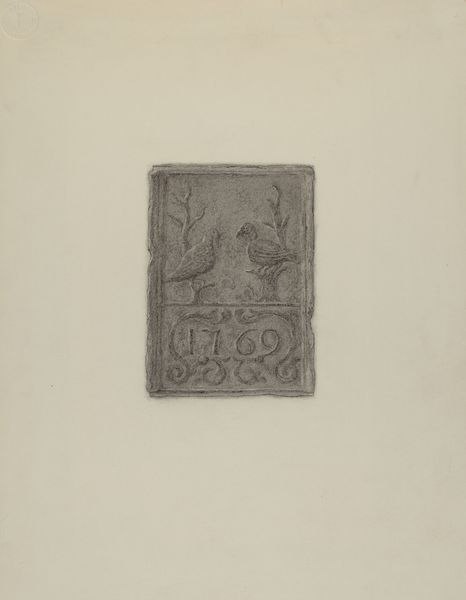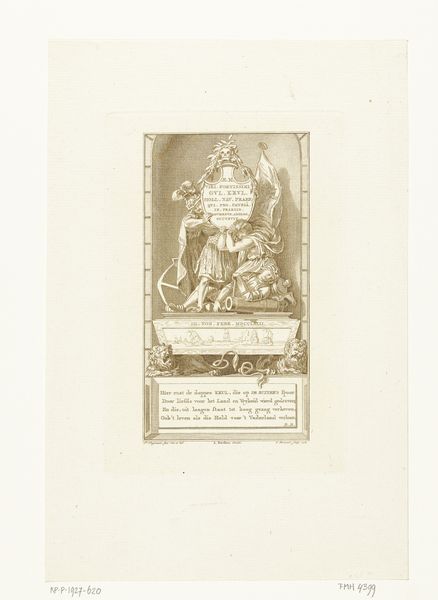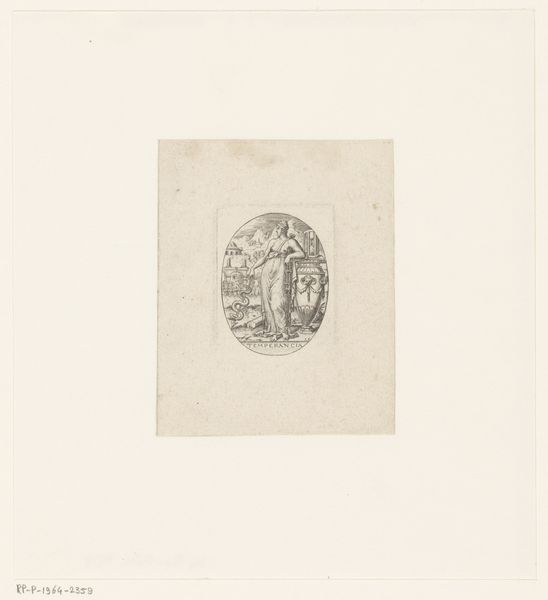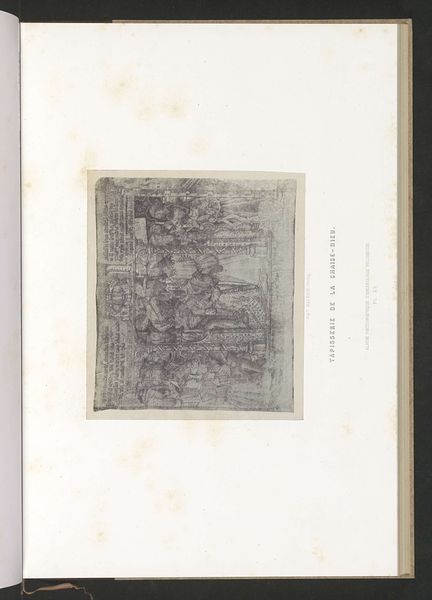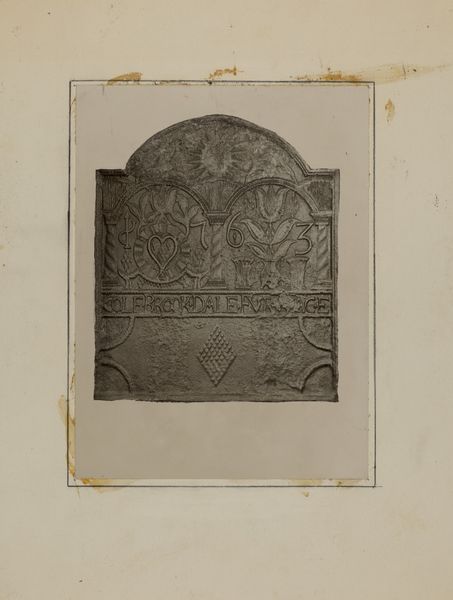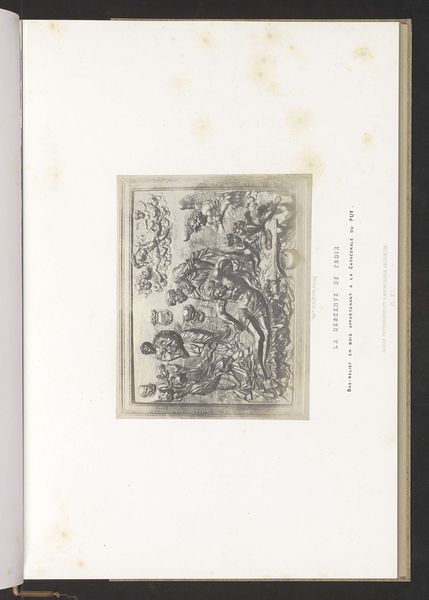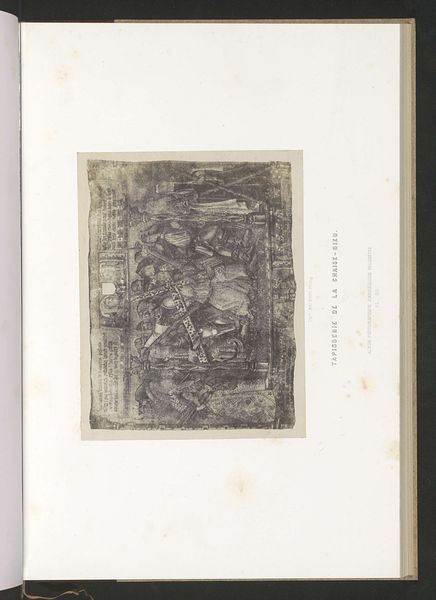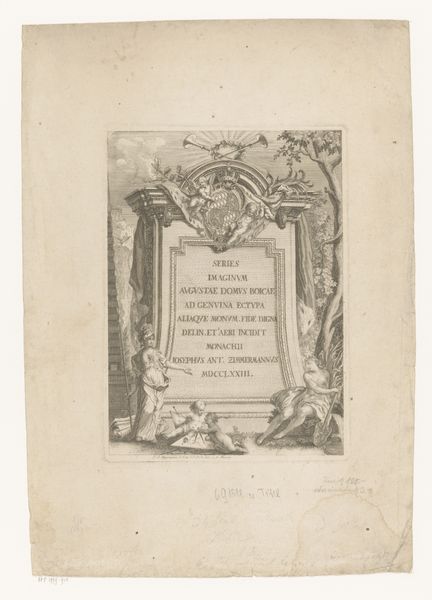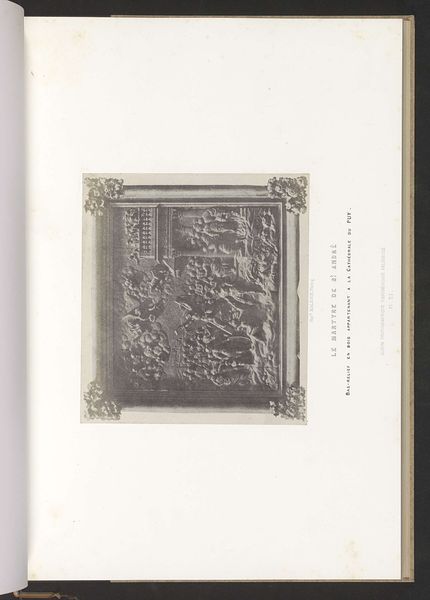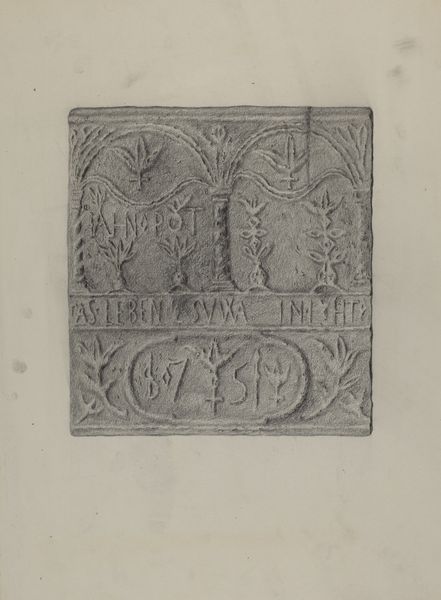
drawing
#
pencil drawn
#
drawing
#
amateur sketch
#
aged paper
#
toned paper
#
light pencil work
#
pencil sketch
#
old engraving style
#
pencil drawing
#
pencil work
#
tonal art
Dimensions: overall: 35.5 x 27.9 cm (14 x 11 in.) Original IAD Object: 22 1/2" high; 27" wide
Copyright: National Gallery of Art: CC0 1.0
Curator: Welcome. We are standing before a drawing titled "Pa. German Stove Plate," created around 1936 by Elmer G. Anderson. It's a delicate pencil sketch. What’s your initial impression? Editor: It feels quite somber, actually. The toned paper gives it an aged quality, almost like a relic, and the light pencil work contributes to that sense of fragility. Curator: Indeed. Anderson’s meticulous rendering captures the details of the original stove plate beautifully. We should remember that stove plates were common objects, functional yet often ornamented with folk motifs and religious iconography. This drawing makes the argument for the value inherent in everyday objects and designs produced by laborers within the Pennsylvania German tradition. Editor: Absolutely. Thinking about the stove plate in its context – a tool, mass-produced, perhaps found in countless homes – and how this drawing elevates its status definitely changes its perceived value. I am struck by the fact that we have German text paired with English, gesturing toward both ethnic continuity and integration in early 20th century America. The promise that “hope that dies shall sometime see peace when hatred wars and strife shall cease” is really interesting considering the rise of Fascism during this era. Curator: Right, and in representing the stove plate in this way, Anderson essentially recasts it, transforming the industrially produced object back into art. What this sketch highlights for me, is how our appreciation shifts when something utilitarian is considered as craft. Editor: It’s also worth pointing out how this medium -- drawing -- becomes a powerful tool here. Anderson’s decision to replicate the plate using a pencil democratizes art-making itself. Pencil and paper are readily accessible tools. Curator: That's a very good point. He almost dematerializes the stove plate. Instead of being an object cast in iron and intended for domestic labor, this image prompts us to reflect on its iconography, its message, and the culture from which it emerged. Editor: It gives one a lot to consider—how artistic intentions impact an object's life and how closely linked visual expression has been to times of turmoil. Curator: Definitely a powerful, contemplative work. Thanks for joining me.
Comments
No comments
Be the first to comment and join the conversation on the ultimate creative platform.
